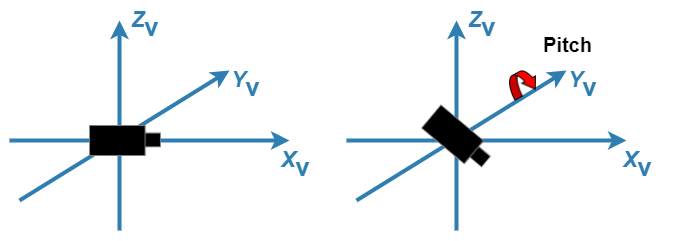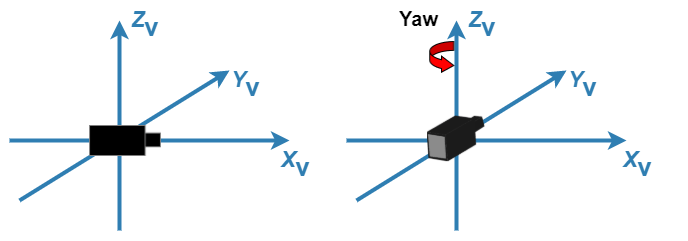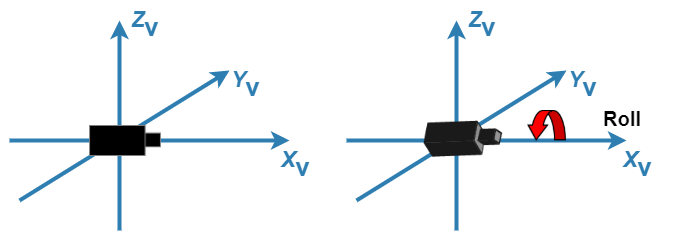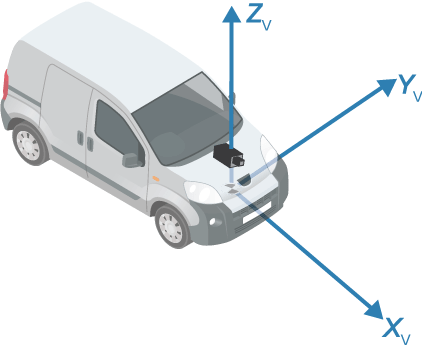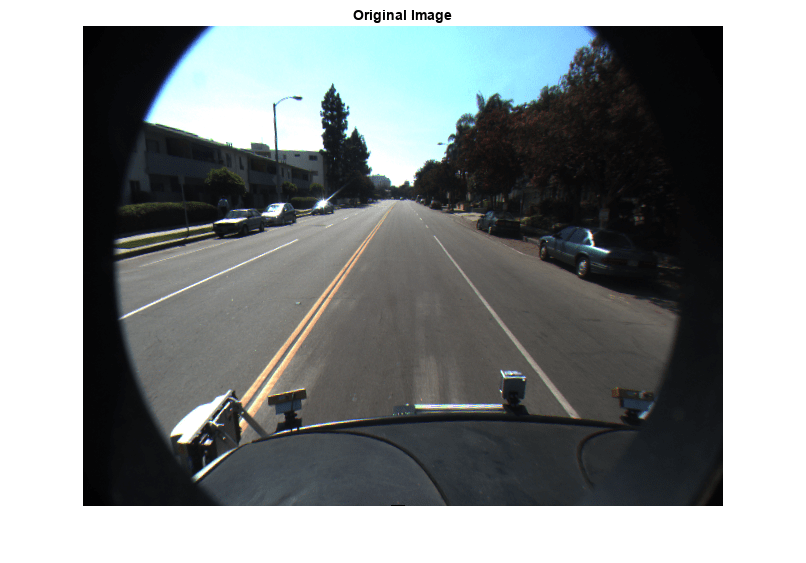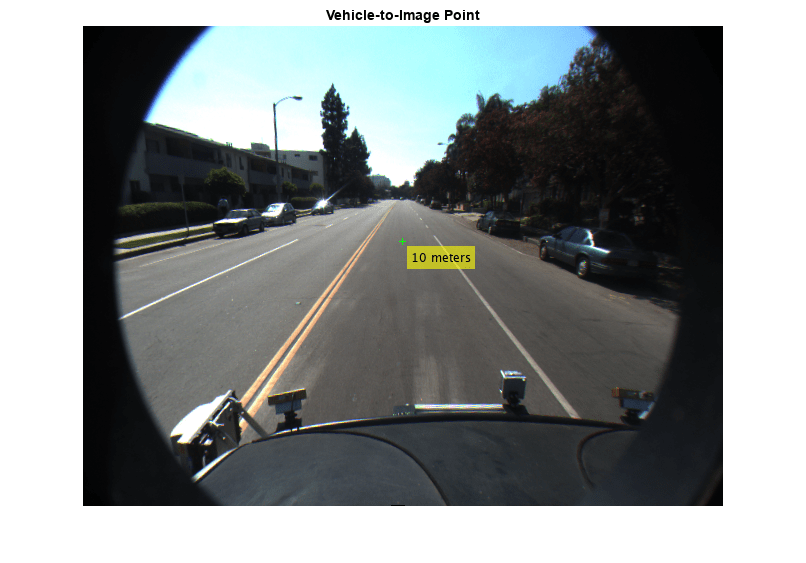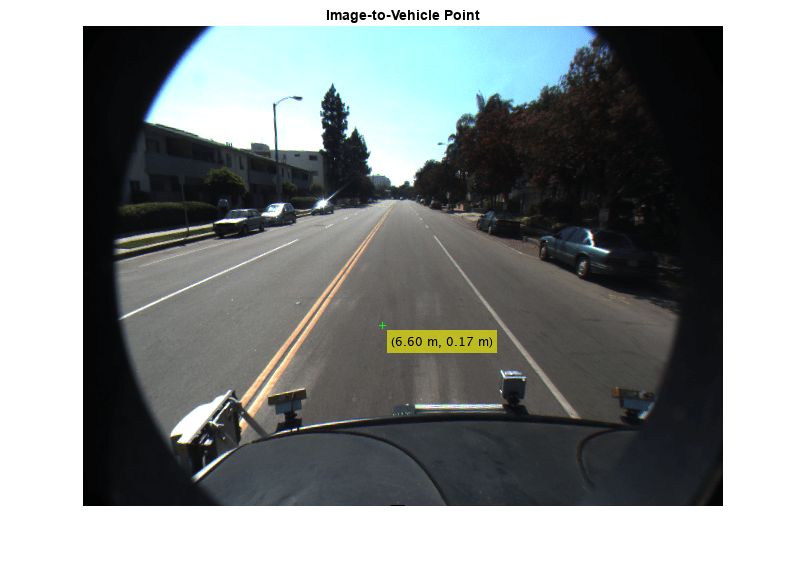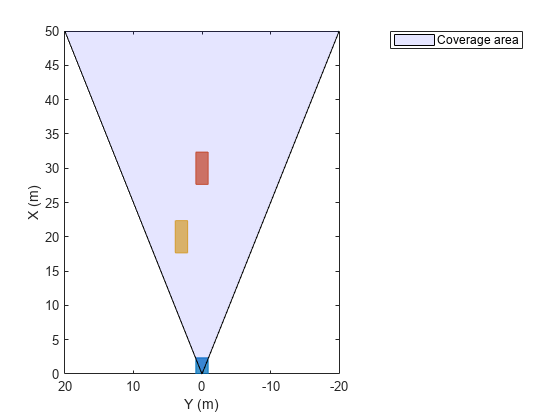monoCamera
Configure monocular camera sensor
Description
The monoCamera object holds information about the
configuration of a monocular camera sensor. Configuration information includes the
camera intrinsics, camera extrinsics such as its orientation (as described by pitch,
yaw, and roll), and the camera location within the vehicle. To estimate the intrinsic
and extrinsic camera parameters, see Calibrate a Monocular Camera.
For images captured by the camera, you can use the imageToVehicle and vehicleToImage functions to transform point locations between image
coordinates and vehicle coordinates. These functions apply projective transformations
(homography), which enable you to estimate distances from a camera mounted on the
vehicle to locations on a flat road surface.
Creation
Description
sensor = monoCamera(
creates a intrinsics,height)monoCamera object that contains the
configuration of a monocular camera sensor, given the intrinsic parameters
of the camera and the height of the camera above the ground.
intrinsics and height set the
Intrinsics and Height properties of the camera.
sensor = monoCamera(intrinsics,height,Name,Value)monoCamera(intrinsics,1.5,'Pitch',1) creates a
monocular camera sensor that is 1.5 meters above the ground and has a
1-degree pitch toward the ground. Enclose each property name in
quotes.
Properties
Object Functions
imageToVehicle | Convert image coordinates to vehicle coordinates |
vehicleToImage | Convert vehicle coordinates to image coordinates |
